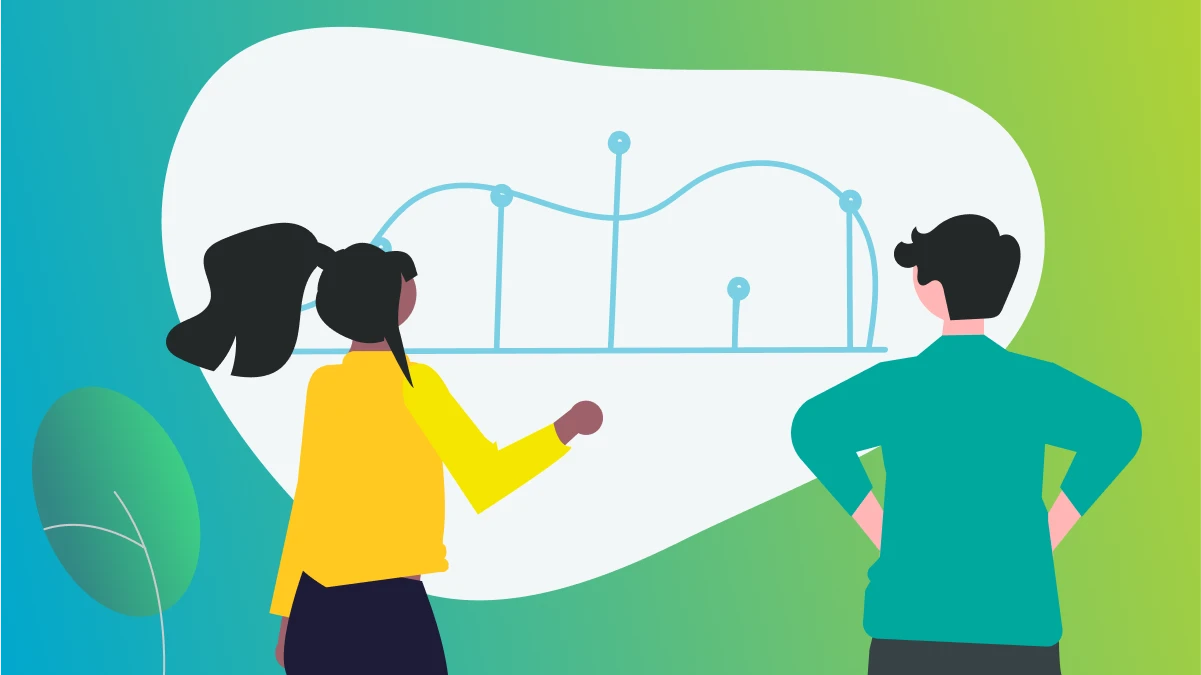If you’re an HR professional, chances are that you’ve encountered a capability framework. They have been rolled out as the answer to everything from organisation re-designs, job architecture and learning and development strategies to a way of measuring productivity.
There are many capability frameworks available including functional frameworks that target a specific part of an organisation, like leadership, or comprehensive frameworks available for purchase through top-tier consulting firms that specialise in organisation design. Others, like those found in the Commonwealth and State government public sectors, are bespoke and have been developed in-house to meet the unique needs of their work environments. Some frameworks are better than others, but most importantly, the best ones are fit for purpose and adaptable to your needs.
There are five key aspects to look for in a capability framework. A well-designed capability framework should (1) be scalable, and applicable to all or most roles within an organisation. It should (2) encompass knowledge, personality traits and skills needed both now and in the future, to support your organisation’s immediate and future strategic priorities. A capability framework should (3) be easy to interpret, and not require an organisational psychologist to administer or understand. It should (4) be user-friendly and (5) cost-effective.
In recent years, software companies have entered the market offering an alternative to cumbersome off-the-shelf frameworks, devising frameworks with capabilities more granular in gauging people’s skill levels, experience and – importantly – potential. Provided that these capability frameworks specify the most appropriate elements and sets of skills for the organisation’s context, they are closing the gap towards unlocking Thomas Edison’s “If we did all the things we are capable of, we would literally astound ourselves”.
Capability Frameworks: Origin, Purpose and Evolution
Capabilities, competencies, skills, behaviours – if they’re not structured in some way they can all become an incomprehensible list of descriptors for how work gets done, but when did they become a ‘thing’ and what is their main purpose?

As distinct from the capabilities sought by engineering metrics, software architecture or military resource deployment, capability in HR is generally defined as an attribute, skill, knowledge, power or ability that contributes to a person’s effectiveness. Some organisations divide capabilities into “I know” (cognitive), “I am” (behavioural) and “I do” (skills required by a role). Capabilities were first referenced in 1979 by Nobel prizewinning economist Amartya Sen.
In 1990, Gary Hamel and C. K. Prahalad came up with core competencies; these are narrower than capabilities, specifying degrees of skill required for tasks. Competencies form the base of any professional role but are suited to stable work environments where circumstances are familiar. Along with capabilities, competencies began filling management and HR lexicons for the next decade.
Capability reviews were utilised in the UK’s whole-of-government reforms in 2005 as part of the Blair Government’s bid for re-election. Capability frameworks were re-vamped by the Australian public service in 2011 following a wide-ranging review by Terry Moran, then Secretary of the Department of Prime Minister and Cabinet.
Capability frameworks purportedly give “clarity about how to do your work”. Capabilities are predicated around organisational expertise (based on the sum of its parts) combined with the organisation’s systems, tools, processes and frameworks used to achieve results. HR managers use them to inform learning and development strategies or to observe people. Forward-thinking People and Culture leaders turn to capabilities to inform succession planning and internal mobility strategies.
A criticism of capability frameworks was that they did not necessarily gauge the full extent of people’s aptitude, rather, they limited the matching of skills to the narrow range deemed required for the roles they were filling. Done well, this aligns a candidate’s suitability for performing a specific role but done poorly, it misses the opportunity of identifying the potential an individual brings to an organisation. When applied to an existing workforce, organisations that view their employees only through a narrow lens of what is needed for their current role, the potential for succession, promotion and internal mobility opportunities can be overlooked. The opportunity cost of this narrow scope often results in organisations incurring avoidable recruitment costs, decreased employee morale, lower employee engagement and reduced productivity and an increase in attrition.
In 1997, organisational economist David Teece with his colleagues Gary Pisano and Amy Shuen coined dynamic capabilities, evolving them from static categories into a “firm’s ability to integrate, build and reconfigure internal and external resources (people, strategies) to address and shape rapidly changing business environments”.
Subsequent debate did not resolve whether dynamic capabilities were concerned with fuelling businesses’ competitive advantage or shifting goalposts on recruitment best practice. Teece attempted to address these questions in 2007 by disaggregating dynamic capabilities into components, but the ways they effect change can remain latent (although often brought to the fore by external imperatives).
With widespread career and industry disruption an undeniable result of the increasing automation of jobs and society’s digital literacy needs, capability is now viewed as the combination of skills, knowledge, values and self-esteem that enables individuals to manage change, be flexible and move beyond competency. It’s a definition with strong implications for organisations’ longevity as they adapt to complex economic and global volatility in the 2020s.
The need to quantify performance
“Not everything that can be counted counts, and not everything that counts can be counted”. If so, this adage has not deterred management theorists eager for buzzy ways to enable improved workforce planning and the quantifying of higher performance.
Capability frameworks provide a consistent structure against which an organisation can assess and rank additions to its workforce and internal employees based on knowledge, skills and abilities needed to perform specific roles across all levels of an organisation, to achieve its goals. Internally, a capability framework clarifies how roles relate to each other in team hierarchies and helps establish necessary objectivity of why and how each person is contributing to an organisation’s goals and outcomes. Multiplied across an entire workforce and properly harnessed, these skillsets and knowledge become organisational capabilities that “emerge when a company delivers on the combined competencies and abilities of its individuals”.
“Quantitative measures of performance are tools, and are undoubtedly useful. But research indicates that indiscriminate use and undue confidence and reliance in them result from insufficient knowledge of the full effects and consequences.”
V. F. Ridgway was cautioning against the overuse of measurement in people’s work performance, but nearly 70 years later, rankings and measurables remain continuing predictors of individual and organisational success. There is also enduring talk about skills gaps and problems with retention; yet insufficient attention has been paid to purposeful up-skilling (beyond training compliance) and equipping workers with attributes that enhance their potential. AI is increasingly stepping into the breach with performance management systems, personalised learning and skills platforms that allow quicker decisions, collaborations and virtual learning. AI is already ubiquitous in recruitment but sometimes eliminates the best people, owing to faults in algorithmic programming.
What does a capability framework offer that other corporate divination methods cannot? They are essentially a matrix that, based on a person’s measurable responses and examples, allows decision-makers to place that person where they will have the greatest chance of success and high performance within an organisational context. Seen in the aggregate, capability frameworks “put (an organisation) in a stronger position to anticipate needs and ignite every position’s purpose. They also boost your (organisation’s) ability to attract, develop and retain great talent”.
The drawback is that many frameworks are poorly understood, poorly implemented and loosely embedded in role design and associated people processes (such as recruitment) that they become obsolete, or worse, a compliance exercise. Where capability frameworks evolve into a tick-a-box exercise, they lose the primary purpose of finding the best people for a role, settling instead for someone who roughly ticks many boxes that may or may not be required for delivering a particular role.
Typical capability frameworks
A typical capability framework has a list of skills categorised into groups based on associated types of skills. The best frameworks offer discrete capabilities, which means they each measure a single capability (i.e. each capability captures one primary focus, not two or more). Typical frameworks seek simplicity and often combine multiple capabilities into one which can impede the capacity for measuring one’s level of proficiency as they may not be the same proficiency level for both elements of the one capability.
Anyone who has applied for a role in a government department is familiar with addressing multiple capabilities selected from the full list of their capability framework. These are sorted into several broad capability groups, such as this one used by the NSW Public Sector, which (excluding capabilities for people managers), has 16 core capabilities organised into four groups:
- Personal Attributes
- Relationships
- Results
- Business Enablers
Each capability has 5 levels:
- Foundational
- Intermediate
- Adept
- Advanced
- Highly Advanced

Assessors usually require applicants to list pertinent recent examples where they demonstrated a particular quality or skill. In addition to the sector-wide framework, some capabilities are occupation-specific (specialised capabilities for professional, technical or trade-type roles).
There are variations on the above, but these capabilities form the framework’s “common language” and measurables.
Whether capability frameworks sufficiently measure a person’s aptitude (let alone accurately forecast their potential) remains debatable, as few frameworks have an objective form of assessing one’s level of capability. This leaves the assessment of one’s capability in the ‘eye of the beholder’, often at a subjective, biased and purely observational level of scrutiny either as a self-reflection by the individual or the hiring manager. Certainly, by 2030, more jobs will require transferable technological, emotional and social skills and fluency, which means that capability frameworks need to offer more.
The 5 must-haves in capability frameworks
With all of the options available and an increasing focus on transferrable capabilities in talent management, what attributes should you look for in choosing a framework for your organisation?
A well-designed capability framework should be:
- Scalable: Applicable across all roles, not just management
- Enduring: Encompassing jobs we’ll see in five years’ time – aligning with where an organisation’s strategic direction
- Interpretable: Easy to understand and interpret, not requiring an organisational psychologist
- Intuitive: User-friendly (i.e. intuitive, no training required, uses commonly understood language)
- Cost-effective: ROI is delivered at all levels of an organisation whether your business is large or small.
As yet, very few online platforms can evaluate candidates’ aptitude against the frameworks currently in use. However, there is now commercially available technology that delves more deeply into what a person can offer, identifying their true “fit” with a role and within an organisation. These capability frameworks objectively measure a person’s potential beyond the position advertised and are proving a valuable stimulus to employee motivation and direction. Moreover, a software’s broader range of articulated capabilities can still align with an organisation’s values. Best of all, it prepares staff for the vagaries of career life during periods of considerable transformation.
Unlocking Human Performance
Humans can’t resist quantifying and measuring to rank an asset, process or person. Just look at the rise in popularity of reviewer and buyer ratings on subscription services and online purchasing sites – we barely purchase anything without knowing its star rating. The same principles apply in recruiting and those principles are embedded in AI and other technologies to rank and stack candidates. Years ago, this was used in an attempt to measure productivity, by reducing people to expendable units in their economy’s production processes. Management guru Peter Drucker was sceptical that knowledge work could be measured the way manual work could: “One cannot tell a knowledge worker in a few simple words whether he (sic) is doing the right job and how well he is doing it.” Drucker did however believe that knowledge workers could be helped towards effectiveness, but not through micromanagement.
A caution sounded in the Harvard Business Review also holds true: “when an organization falls below the norm in any of (its identified) capabilities, dysfunction and competitive disadvantage will likely ensue”. In recommending capability audits, the article’s authors were concerned that leaders would focus on “what is easy to measure instead of what is in greatest need of repair” (i.e. concrete activities rather than the capabilities to which further training could be directed).
Given that knowledge work is here to stay, maybe we should ask whether capabilities can be further quantified to drive human performance.
The answer for organisations continues to be yes, but society increasingly has the tools and understanding to do it better. A broader palette of capabilities, together with tech, has made considerable inroads in measuring – if not knowledge work – the conditions that enable the proliferation of knowledge.
The good news is that there are capability frameworks combined with psychometric assessments that don’t simply pigeonhole a person, they map and project genuine possibilities. Well utilised during an individual’s career or organisation’s development trajectory, such frameworks measure for ongoing discovery and could indeed prove astounding.
This paper looked at the origins, value and key features shared by the best capability frameworks. It is our hope you now have the tools to confidently rank and review the capability frameworks in the market and apply these learnings to unlocking human performance and creating a happier, more fulfilled, workforce.
Interested in learning more about the AbilityMap Capability Framework? Click the link below to download the overview.
AbilityMap Capability FrameworkFootnotes
- https://iep.utm.edu/sen-cap/
- https://www.jstor.org/stable/4624667
- https://www.anzsog.edu.au/preview-documents/research-output/5342-capability-reviews-of-australian-government-departments-2010-2013/file
- This quote is incorrectly attributed to Albert Einstein, but reportedly it was American sociologist William Bruce Cameron, in 1963.
- https://hbr.org/2004/06/capitalizing-on-capabilities
- V. F. Ridgway, “Dysfunctional Consequences of Performance Measurements”, Administrative Science Quarterly, Vol. 1, No. 2 (Sept 1956), p. 240.
- https://ins.com.au/capability-frameworks/
- https://www.psc.nsw.gov.au/workforce-management/capability-framework/the-capability-framework
- https://www.mckinsey.com/featured-insights/the-next-normal/capability-building
- https://www.theguardian.com/us-news/2022/may/11/artitifical-intelligence-job-applications-screen-robot-recruiters
- Peter Drucker, The Effective Executive, 1966
- https://hbr.org/2004/06/capitalizing-on-capabilities
- Ibid.


